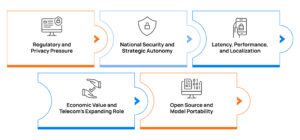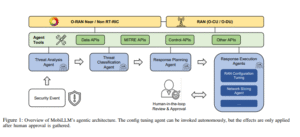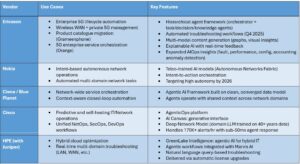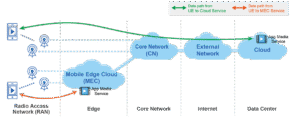We are all aware of the fact that the world is moving towards intelligence-based automation. Emerging technologies, like artificial intelligence and machine leaning, will be playing a key role in making network more intelligent. The journey towards a ‘zero touch’ network is started with a need by telecom service providers to couple with digital innovation and incorporate their efforts in the upcoming fifth generation (5G).
But automating deployment and managing operations in largely distributed telecom networks are the biggest roadblock. SDN and NFV serves as a boon to this purpose – and recent development around both of the technologies is expected to meet the 5G dream for telecom operators.
Need for automation
With NFV and SDN, network devices are replaced with software packages and it becomes possible to control and manage existing network equipment (virtual or physical). 5G enabled the application of SDN and NFV into network infrastructure to reduce cost associated with hardware devices and surged towards high bandwidth network and lower latency. But as the Telecom networks are widely spread in large geographic area, it is still impossible for operators to deal with manual installation and configuration of network which leads to slow implementation. Also, there are challenges associated with onboarding, deploying, scaling, patching and updating virtual network functions (VNFs) which forms the services by chaining together. For telecom network operator, it can become time consuming to launch new services due to manual configurations around VNF integration & adjust NFV infrastructure according to it. And there are more number of VNFs will be deployed, which are chained together to form a new service.
SDN and NFV enable service providers to create highly programmable networks with automated workflows. With automation service providers can solve challenges with respect to managing complexity in NFVi, operational costs reduction, and faster delivery of new services for service providers.
Cloud native approach and DevOps enablement
To achieve lower to high level automation in an NFV-enabled 5G network, telecom operators and NFV vendors are considering a cloud native approach. Service providers noticed the evolvement of software in every part of the telecom network due to SDN and NFV which allows them to implement cloud-based automation for infrastructure deployment, operations and VNF lifecycle management. The use of cloud proves a main triggering factor to move towards automation.
VNFs within the NFVi is more like a software application and will be treated as a cloud application. VNFs as cloud application can be fragmented as microservices, deployed in containers and can be dynamically orchestrated in NFVi. With container management and orchestration platform such as Kubernetes, it is possible to enable automation for management and real time application updates to applications within containers.
Furthermore, a high level automation can be achieved by considering a DevOps model of software development and operations in which the development and packaging of the VNFs, and design of the end-to-end VNF chains are performed. In DevOps model, VNFs are developed outside the service providers NFV infrastructure and after development, VNFs are integrated and configured inside NFVi. It becomes necessary for service providers and vendors that both share operational requirements and have a system in place to properly set up routines to continuous integration of new updated VNFs without disturbing NFVi operation.
Role of ONAP (Open Network Automation Platform)
ONAP is an open source Linux foundation community project, powered with most of the initial code contribution by AT&T and China Mobile. To build ONAP, AT&T contributed with their open source project ECOMP (Enhanced Control, Orchestration, Management and Policy) and China Mobile contributed with Open-Orchestrator (Open-O) project. The purpose of ONAP is to standardize NFV MANO to provide management, automation and orchestration for NFV deployments. ONAP is responsible for policy driven orchestration and automation of virtual network function(VNFs) deployment.
Conclusion
While many operators are in trial phases of 5G in selected areas, it is expected that multiple service providers will offer 5G networks in the next five years. NFV is still going through a maturation stage where it lacks the robust standard and well defined procedures, common information models & use cases for fully functional cloud approach enablement in NFV operations. 5G network will also implement Mobile Edge Computing (MEC) to get closer to end user for customized delivery of services in particular location. It will also offer very low latency and high bandwidth to connected devices.
To fully realize the potential of 5G networks, service providers will need automated control over each part of the network. A ‘zero touch’ feature will be a key factor that 5G network will need from cloud native deployment of NFV infrastructure.






Be First to Comment